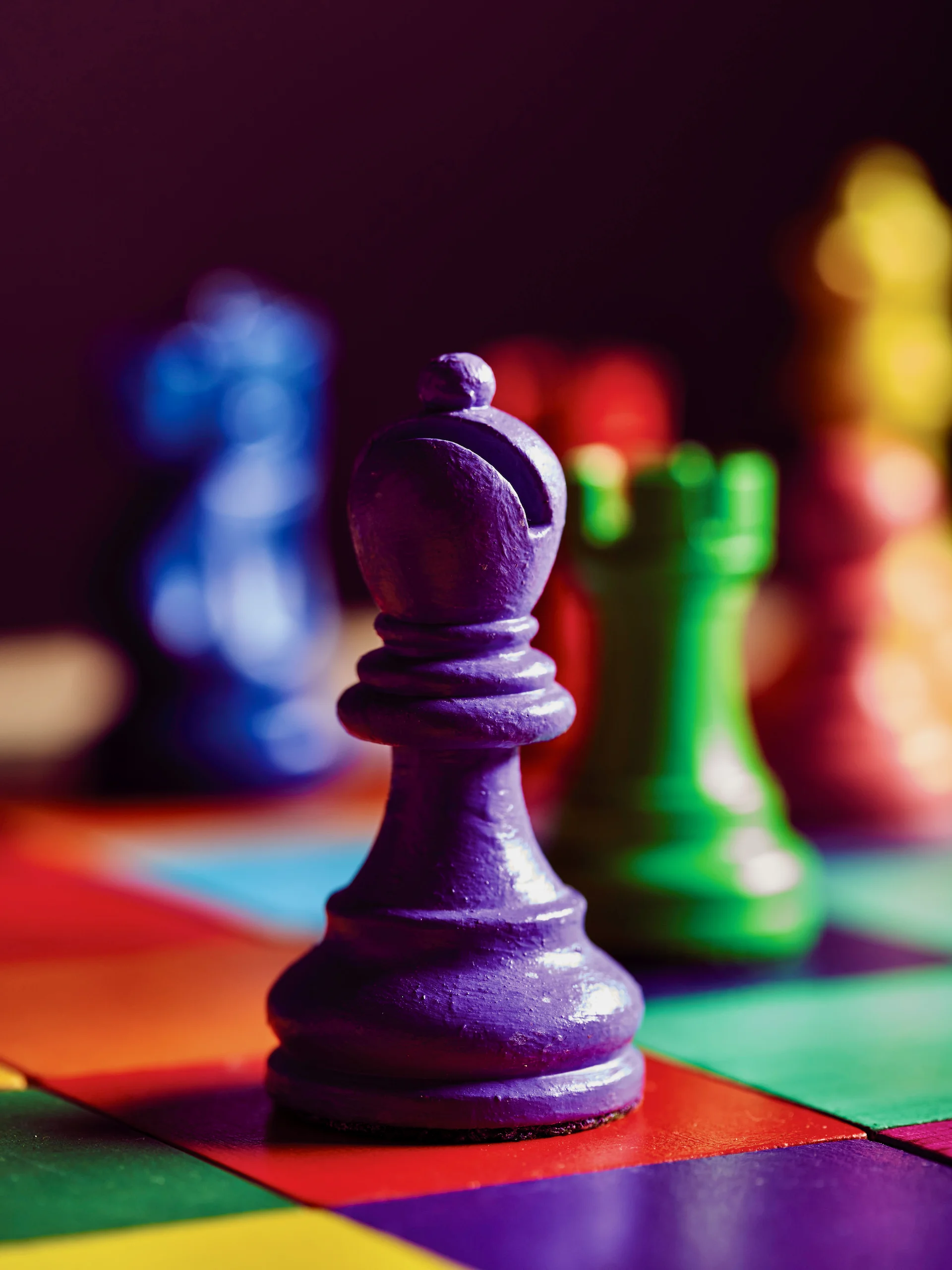Museum of the Twentieth Century. Councilor Sacchi at the inauguration of the exhibition "The rules of the game" by Massimo Kaufmann
Museum of the Twentieth Century. Councilor Sacchi at the inauguration of the exhibition "The rules of the game" by Massimo Kaufmann
The free entry exhibition can be visited on Tuesday, Wednesday, Friday, Saturday and Sunday from 10am to 19pm and on Thursday from 30am to 10pm – Photo gallery - Museo del Novecento
Milan, May 31 2023 – Today, Wednesday 31 May, at 18 pm, at the Museo del Novecento, the Councilor for Culture Tommaso Sacchi will intervene at the inauguration of the exhibition "The rules of the game", scheduled until 31 August 2023. Four works are on display, real artist's chessboards: three of these, made of wood and with regulation measurements (57x57 cm), are made up of the usual 64 squares and 32 chessmen painted with oil paints in 96 different colours; the fourth, Pan, smaller in size, is intended for boys and girls.
Despite the clear subversion of the first rule of chess - which here no longer provides only for black and white to oppose each other, but rather an infinite possibility of colors - the methods and rules of the game remain identical and the boards perfectly usable: two quite expert players they can compare according to all the canonical rules without incurring any other inconvenience other than the perceptive confusion generated by the colors and accentuated by the continuous movement of the pieces.
To demonstrate this, the four chessboards are made available to visitors who, upon reservation, will be able to compete in exciting chess duels on Tuesday during the lunch break and on Thursday before the scheduled talks. The artist will also be open to challenges: a presence that transforms the exhibition project into a performance.
Massimo Kaufmann's chessboards are conceived in a critical historical moment, 2020, which will not end with the waning of the pandemic but will continue in the Russian-Ukrainian conflict. It is therefore precisely in the theme of conflict that Kaufmann's works have their roots: the "war", which the game of chess represents and reproduces, shows itself under a different aspect.
Each piece of the chessboard maintains its functional characteristics but has an identity, given by the colour, which prevents it from belonging to a specific alignment. A situation that generates cognitive confusion and favors changes of direction and belonging.
The chess game therefore becomes a metaphor for a conflict which sees not only two antagonists confronting each other but an innumerable group of different subjectivities coming to life in the game, as if to show a multilateral nature of the components involved. As in real wars, there are factors that multiply the points of view and interests in the field.
The game becomes more complicated, as the theme of the conflict becomes clearer, on the third board. Made in 96 shades of grey, it is openly inspired by Picasso's Guernica, adopting the same title because, contrary to popular belief, Guernica is not black and white, but painted in an infinite variety of greys, the result of adding black to reds, to blues, to yellows, in a range of "burnt" colors, as war incinerates everything it touches.
It is perhaps this work, in its tribute to what is considered by many to be the most important work of the twentieth century, that constitutes the trait d'union between the two great thematic nuclei of the exhibition: conflict, precisely, and painting. For Massimo Kaufmann the main game remains painting, its very definition, with its infinite variables and its infinite possibilities of giving shape to a meaning, be it enigmatic or multivalent, without ignoring that any game always has its rules.
Even in the other two chessboards, the ones with the brightest colours, The Rules of the Game and Caliban, painting emerges as the protagonist. The artist mentions how colors in painting have always fought against each other. In the most extraordinary works dedicated to war, such as those by Paolo Uccello or Boccioni, the clash takes shape through a chromatic dispute that seems to prepare an explosion of energy. The idea that colors represent dynamic energy, like trumpet blasts and drum rolls, shows all the will to power that has always accompanied the rhetoric of war.
A program of challenges and meetings is also planned for the month of June, in the presence of Massimo Kaufmann himself and the three authors of the texts in the catalog - Marco Senaldi, philosopher, curator and theorist of contemporary art, Francesco Cataluccio, writer and essayist and Lorenzo Madaro, art critic and curator – who will discuss chess, literature and contemporary art.
The exhibition, created with the support of Analysis, is accompanied by the catalog "The rules of the game" published by Pondus.
Meeting calendar:
- Thursday 8 June, 19pm with Marco Senaldi, "What is a chessboard for?";
- Thursday 15 June, 19pm with Francesco M. Cataluccio "A checkered life. Figures and stories";
- Thursday 29 June, 19pm with Lorenzo Madaro, "Playing to meditate".
Information
Forum900 hosts players who want to challenge or play with Massimo Kaufmann on Tuesdays from 12pm to 30pm in the month of June and first week of July and from 14pm to 30pm before the Thursday matches. Reservation required, write to c.inaugurazionim900@comune.milano.it.
Products
"The rules of the game" with texts by Francesco Cataluccio, Lorenzo Madaro, Marco Senaldi. Published by Pondus.
Promotion edited by Nora communication.

Subjects:
Updated: 01/06/2023
